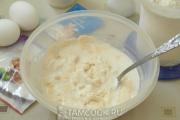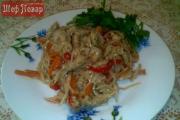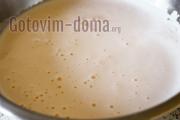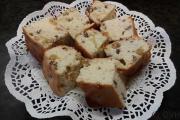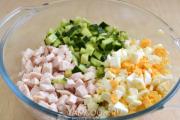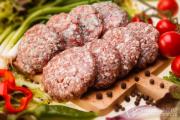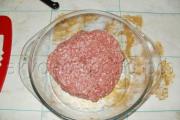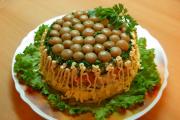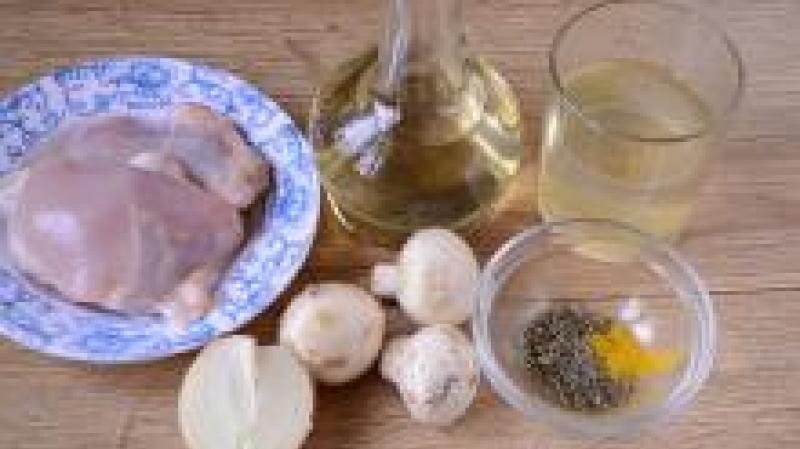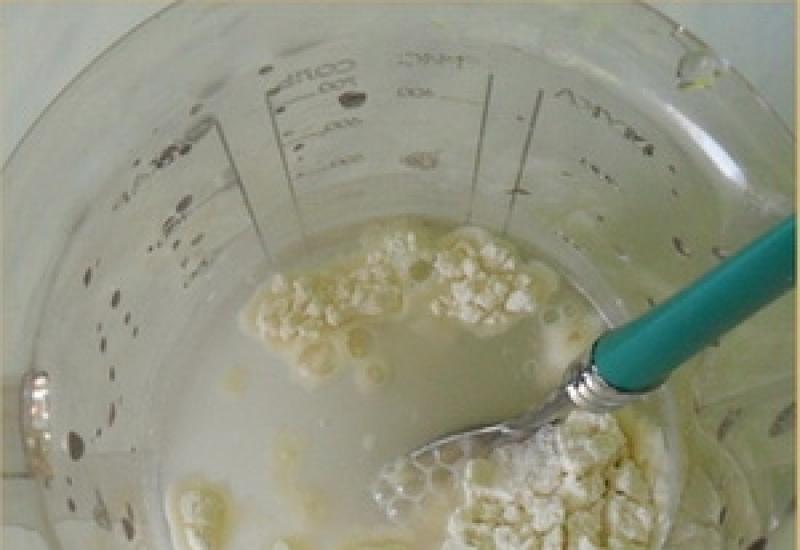Paraguayan holly - use as raw material for mate. Mate use in different countries
Probably, there is not a single person who would not know about this unusual drink. And this is not surprising, because mate tea is an integral part of the culture and traditions of many South American countries. The drink is known for its tonic properties as it contains matein. Outwardly, it resembles green tea, but in its taste and aroma, mate (or mate) is a very special drink.
What is mate tea
Mate tea, or, as it is also called, Paraguayan tea has nothing to do with the traditional drink made from the leaves of tea bushes. For the manufacture of mate, dried and ground leaves and young shoots of the Paraguayan holly (yerba mate) are used.
This evergreen plant, or rather a tree, is found in the wild in Paraguay, Uruguay, Brazil and Argentina. For the production of the drink, it is grown on special plantations.

Paraguayan holly (Latin Ílex paraguariénsis)
Mate tea is often referred to as an ethnic tea group. This category includes drinks of different nations, which are similar in structure, brewing method and consumption to tea. There are a lot of such drinks in the world, but five are most widespread: kudin, rooibos, honeybush, lapacho and mate.
The taste of mate is unusual. It has both a slight bitterness, a sweetish aftertaste and a rich herbal aroma. A properly prepared drink has a clear infusion of light green color.
Origin story
The exact time of the emergence of mate tea is difficult to establish today. However, there is information that the Indians living in the territory of modern Paraguay, this tonic drink was known not only before the arrival of Europeans, but even long before our era.
After the Spanish conquistadors conquered the Inca empire, they set out to conquer Paraguay. It is to this period that the first surviving mentions of this drink in history belong.
The Indians called mate "the divine elixir of life" and drank, passing kalabas to each other like a pipe of peace. At first, the conquistadors were surprised by the reverent attitude of the indigenous population to this tea. However, the Spanish soon appreciated the drink for its ability to cure scurvy and fever.
How is mate made
Real Paraguayan tea should be golden green in color and consist of three ingredients:
- Stems, which contain all the main nutrients.
- Leaves that give the drink its characteristic taste and astringency.
- Light dust, which indicates that the raw material has been dried correctly.
Unlike traditional tea, for the production of which the upper buds and young tender leaves are plucked from the tea bush, for the production of mate the entire shoot is cut from the tree. Harvesting is carried out from early spring to late autumn. After that, the raw material undergoes the following processing:
- fast drying;
- additional drying;
- coarse grinding;
- excerpt;
- fine grinding;
- package.

Harvesting of paraguayan holly leaves
Depending on the processing method, several types of drink are distinguished:
- Green. Manufactured using traditional technology.
- Fried. During its production, a frying stage is added.
- Gold. It is produced in Argentina and is considered to be of particular value. In the process of its manufacture, raw materials are processed with smoke over fires, and then in clay ovens, for which special wood is used for kindling.
Today, not only traditional mate is produced, but also packaged (green and with various additives) and even instant. They say that it was developed specifically for the Argentine national football team: it is convenient to take such a drink with you on trips.
Composition
Holly leaves have a rich composition, and mate drink is comparable to, and even surpasses it in the presence of trace elements and vitamins in it. If green tea contains 144 active substances, then Paraguayan tea contains 196 useful components. Mate tea contains:
- a group of alkaloids including caffeine, theobromine and theophylline;
- vitamins A, C, E, P and group B (B1, B2, B5, B6);
- choline, flavonoids, amino acids and saponins;
- trace elements - magnesium, iron, sodium, sulfur, manganese, potassium, copper.
The caffeine in the drink is called matein. A number of experts believe that it is identical in chemical composition to caffeine, but differs from it in properties. Due to the presence of this potent substance, Paraguayan tea has a tonic effect, and mate extract is used to create a number of energy and tonic drinks.

In South America, there are two types of this tea. One of the drinks has a strong stimulating effect as it contains high concentration of matein. The second type of tea has a much milder tonic effect on the body.
Beneficial features
Tea has a positive effect on the nervous system and improves memory. It stimulates mental and physical activity, but this is not the end of its beneficial properties:
- The drink removes toxins from the body and helps fight stress.
- Thanks to the large amount of vitamins, it strengthens the immune system.
- The drink is a powerful adaptogen, antioxidant and immunomodulator.
- It tones up perfectly, because it contains matein, but at the same time its action does not lead to insomnia.
- Tea stimulates the gastrointestinal tract, speeds up metabolism and helps cleanse the blood vessels.
- Studying the beneficial properties of mate tea, scientists have found that it is a powerful anti-aging agent.
Mate tea and its unique properties are worth a look for everyone who wants to lose weight. The benefit of mate is that it is a natural stimulant, helps to burn excess calories and break down fats. The drink itself is low in calories, moreover, it can significantly reduce appetite, while providing the body with all the necessary vitamins and microelements.
Harm and contraindications
For all its beneficial properties, mate tea also has contraindications, which include:
- increased acidity of the stomach;
- kidney disease;
- pregnancy at any time;
- lactation period;
- age up to 14 years;
- tendency to deposit salts in the body.
You should not drink mate tea too hot. Drinking too hot a drink has been found to be suspected to be carcinogenic to the human body. It is also not recommended to drink it in unlimited quantities.
How to brew mate tea properly
It is customary to drink Paraguayan tea from a special vessel - calabas, in which it is brewed. Traditionally, these vessels are made from gourd. It was from these fruits that in ancient times the Indians began to make the first containers for this drink.
Today calabas can be made from different materials, but original "pumpkin" vessels are still widespread and very popular. However, the recipe for the preparation of this drink has practically not changed. Let's take a look at how to brew mate:
- Calabas is filled with tea leaves about 2/3 of the volume.
- The hole of the calabash is closed with a palm, shaken several times, and then the tea leaves are slightly moistened with water.
- Water for making mate must be clean and soft.
- A bombilla is placed inside the swollen tea leaves, tilting the calabash at an angle of 45 degrees.
- The bomb is inserted once, it is not taken out, and the drink is never interfered with.
- Then the kalabas is completely filled with hot water.
- The water temperature should be no higher than 75-80 degrees.
- Mate tea is infused for 1 minute and then drunk.
- One infusion can be brewed up to 7-9 times.
The culture of eating mate
Mate drink is drunk either through a reed, or with the help of a special metal tube called bombilla. At one end there is a strainer, which serves as a kind of filter that prevents the leaves of the tea leaves from getting into the mouth.

Mate tea should be drunk after cooling a little, but this drink should be consumed immediately after brewing. If it stands longer, then its infusion will acquire a bitter taste. As soon as the tea is drunk and the liquid in the calabash has run out, you can immediately brew it again.
It is not customary to add sugar to this drink, but you can set off its taste with lemon juice. Many also drink mate with milk, cream or fruit extracts. However, true connoisseurs are skeptical about such options for their favorite drink, preferring to drink it in its pure form.
“You know, old man, let's stay here. I will marry an Indian woman from a noble Inca family, proclaim myself emperor and become the ruler of Peru, and appoint you prime minister, and together we will carry out a social revolution. "
Che replied: "You are crazy, Mial, you can't make a revolution without shooting!"
The first interlocutor was Alberto Granado, nicknamed Mial. The second, as you probably guessed, is the great revolutionary Ernesto Guevara, aka Che Guevara. The conversation took place at a sacrifice site in the ancient Inca city of Machu Picchu in Peru. Friends talked, dreamed and ... drank mate tea. Even now, you can find photographs of Che sipping a life-giving drink from a small, narrowing vessel through a silver tube with pleasure.
What is mate
Mate (aka mate) is a tonic drink that has taken root among the people as Paraguayan tea. In fact, mate is not tea, since it is not prepared from the leaves of the tea tree, but from the leaves and young shoots of an evergreen tree from the Yerba Mate holly family (aka Hierba mate, Yerba mate, or even Latin Ilex paraguariensis). The Quechua and Guarani Indians call the tree kaa - they need its leaves like air, while in our country mate is still a curiosity. In Latin America, the drink is analogous to the pipe of peace. The owner of the house serves the mate to the most distinguished guest, and then he moves in a circle depending on the importance of the other guests.
The word "Mate" is borrowed from the Quechua Indians (matí) and means a dried pumpkin, that is, a vessel from which you can drink. The analogy is given for a reason. Traditionally, mate is drunk from dried and processed tynk-gourd, which we call calabash (I prefer “calabas”). To prevent crushed leaf particles from getting into the mouth, inventive Indians came up with bombilla tubes (again, I prefer “bombija” or, at worst, “bomber”). At the bottom, the tube has a flask-shaped sieve, which filters the drink. Initially, bombizi were made of wood, but over time they began to use metal for this, especially silver because of its antiseptic properties (after all, the drink is drunk in a circle from one tube).

History of Mate: From God to Commerce
I don't really want to go into the details of the history of mate - Google will help you. I will only say that the first written mention of the drink dates back to 1605 - the monk Rejinaldo de Lizarraga wrote about the development of Paraguay by the Spaniards. Of course, it is foolish to investigate the question: who came up with the idea of brewing chopped tree leaves using such a complex technology? This drink could only be given to people by celestials or their mentors on earth. Among different peoples, the origin of the drink is embodied in many legends.
One of the legends says that mate was given to people by two goddesses who descended to Earth and were frightened by a jaguar. The young Indian drove the beast away, for which he was awarded the secret of a drink that doubles his strength and perfectly quenches his thirst. Guarani, however, claim that mate was given to them by a man-god who, with his mentors, walked through the forests of South America and got lost. The travelers were sheltered and fed by the old man and his beautiful young daughter. God liked the girl so much that he turned her into a beautiful tree, which is revered to this day. Legends are countless, but the essence is the same: mate is a divine drink.
In the 17th century, when the Spaniards decided to eradicate heresy in the occupied colonies, mate was declared "the drink of the devil." But the monks, especially the Jesuits, themselves became addicted to the drink, and only then they saw its economic benefits. This is how mate came to Europe, where it was incredibly popular until the 19th century, when it was supplanted by its "fashionable rivals" - tea and. By the way, it was through the fault of the Jesuits that mate was considered a herb for a long time - the Indians supplied them with a ready-made, crushed drink, the monks did not even see the plants themselves.

And this is the most interesting thing and I tested it on my own skin. First, about the taste. A properly brewed drink has a tart, slightly bitter taste with a slight sweetish aftertaste. It is unlikely that it will be possible to explain this unusual and pleasant taste through the blog pages, so it's better to try it yourself. Mate contains alkaloids that belong to the same group as caffeine (these alkaloids are also called matein, remember, I wrote about it in the article). Among other things, the drink contains about 196 active vitamins, as well as a huge amount of trace elements, including magnesium, sulfur, potassium, sodium, manganese, copper, iron, chlorine and many others. In principle, mate is similar in composition to tea, only with a more interesting effect.
It is believed that mate strengthens the immune system, improves appetite, smoothes wrinkles and stops aging. But most of all, the consumption of the drink from Yerba Mate affects the mental health of a person. It is recommended as a means of reducing the harmful effects of depression and neurosis. It improves mood and increases activity (like caffeine), only mate acts more mildly - relieves the symptoms of insomnia, fussiness, anxiety, nervousness and emotional imbalance. This is largely associated with the suppression of adrenaline in the blood. Many people have proven that it takes much less time to sleep after taking mate.
I personally declare that mate is a panacea for many problems. At one time, when I worked 12-15 hours and devoted 4-5 hours to sleep, a couple of brews in Calabas mate helped me to withstand the next working day. Also, I immediately noticed that mate, like grapefruit, dulls the feeling of hunger, but then the appetite only improves. It was only later that I heard that young ladies use it during their multi-week diets as a remedy for hunger. I also heard that in some countries monks use mate during fasting, and it seems to me that this is the true truth. All in all, the benefits of mate are irrefutable.
I see no reason to continue ranting - quickly feet in hand and to the nearest tea shop. You can buy mate almost everywhere, but for some reason, not many people know about its existence. This is just an introductory post. In the near future, look forward to more posts about this wonderful drink, where I will tell you how to brew mate, how to drink it, and also suggest some alternative recipes.
What do you think of mate?
Julia Vern 21 157 1
Mate is a traditional drink in many South American countries, where it is an indispensable companion for the indigenous people throughout the day. With a sufficient concentration of caffeine and various vitamins, it serves as a serious source of energy, increasing the overall tone of the body. Mate infusion is officially recognized as the national drink in Argentina, Uruguay, Paraguay, Bolivia, Chaco and southern Brazil. In addition, mate is very popular in southern Chile, Syria and Lebanon. The latter two countries are the largest importers of mate raw materials in the world.
The raw material for the preparation of the drink is crushed powder from the dried leaves of the IIex Paraguariensis tree, better known as Erva Partner or Paraguayan Holly. The powder is infused in hot water in a special vessel and served with a straw. A mate vessel is called a calabash, and a true calabash must be made from a special kind of pumpkin. The straw also has its own name - "bombilla", or "bomb" - in Portuguese, or "massas" - in Arabic. Traditional bombilla is made of silver; more budgetary and household options are made of cupronickel or hollow reed.
Pumpkin calabash is a traditional South American historic crockery atavism. In some of the poorest regions of Brazil, pumpkin dishes are still used not only for drinking mate, but also as household utensils for eating and drinking, which is collectively called "tavern".
Holly leaves are dried, finely ground into a powdery mixture called "Yerba" and poured into a calabash. Pour hot water and insert a bombilla, which, on the one hand, is a kind of mouthpiece, and on the other, on the sides it is pierced with small holes, which, like a sieve, filter the infusion from the particles of tea raw materials.
Mate is a very ancient drink, beloved among the tribes of the Indians of South America, in particular Guarani and Tupi, inhabiting the area of the modern territory of Paraguay, Southern Brazil, Southeast Bolivia, North-Eastern Argentina and Uruguay before the outbreak of the Paraguayan War (1864-1870) ...
Guaraní has its own legend about the origin of mate. Once upon a time, the goddesses of the Moon and the Clouds descended to earth in one day and they stumbled upon a very hungry jaguar who wanted to attack and tear them apart. One poor old man from the tribe saved the goddesses, for which he was given the seed of a tree, making a drink from the leaves of which, he will create a "drink of friendship."
The consumption of mate became widespread, thanks to the European colonization of Paraguay at the end of the 16th century, when Spanish settlers began to adopt the best, in their opinion, preferences of the indigenous Indians. Through the territory of Roi de la Plata, mate entered Chile by the beginning of the 17th century, where it became as common a commodity as tobacco, cotton and beef.
By the middle of the century, the Jesuits, penetrating everywhere and everywhere, appropriated one of the production of mate tea raw materials, located on the territory of Misiones - one of the largest missionary reservations, which causes serious economic damage to the Spanish owners of the mate production, who supplied tea raw materials to Europe on independent terms.
After the expulsion of the Jesuits from Paraguayan territories in the 1770s, missionary activity declined, as did Christian mate production, which greatly supported the Paraguayan economy, which was mainly based on the export of tea raw materials, but was almost completely destroyed during the Paraguayan War. ...
Such conditions allowed Brazil and Argentina to take leading positions in the production of raw mate by the end of the XIX, beginning of the XX century. Over the years, when Brazilian entrepreneurs opted for coffee production, Argentina rebuilt the former Jesuit plantations in the province of Mignones, becoming the second largest exporter of mate raw materials after Brazil.

Paraguayan holly plant - raw material for mate is made from it
To date, true and high-quality mate tea is supplied only by three countries in South America - Brazil, whose exports account for 53% of the total supply of mate, Argentina - 37% and Paraguay - 10%.
Properties of mate tea
Mate is generally recognized as a safe drink for health, but steaming the powder with too hot water, close to the boiling point, increases the risk of carcinogenic substances in the finished drink. For this reason, the International Agency for Cancer Research has classified mate tea in group 2A, where there are substances that can cause the development of cancers.
Mate contains a certain amount of vital vitamins and minerals for the human body, in particular - vitamins A, B1, B2, C, E and sufficient to pay attention to the amount of phosphorus, iron and calcium.
Mate tea and cancer
A review of a number of population studies in 2009, revealed facts about the connection of cancer of the esophagus and the regular use of hot mate. Such studies, however, have not been completed - it is necessary to prove or disprove the fact that the appearance of cancer cells depends on the consumption of mate drink, and not only hot drinks, which also increase the risk of neoplasms in the esophagus region.
In addition, researchers from the National Cancer Institute of the United States, with the support of their Brazilian colleagues, determined that under the influence of boiling water on yerba powder, after insisting in water, polycyclic aromatic hydrocarbons, benzopyrenes, which have an active carcinogenic property and impart certain harm to tea mate. Moreover, the concentration of benzopyrenes is much higher in tea raw materials processed with smoke at the time of preparation than in yerba raw materials, the preparation technology of which does not regulate smoking. From which it was concluded that carcinogenic substances enter the drink due to combustion products and are not contained in the holly leaves themselves.

Calabash - Traditional Drinkware
Mate tea antioxidants
Paradoxically, parallel studies show that the drink has a significant effect in the fight against cancer cells, thanks to the large amount of polyphenolic antioxidants, the concentration of which is much higher than in green tea, which indicates the benefits of mate tea.
Research conducted at the University of Illinois in the United States from 2005 to 2011 found inhibition of proliferation of colon and oral cancer cells.
On average, mate tea contains about 92 mg of the powerful antioxidant chlorogenic acid and no catechins, allowing for a significant increase in the antioxidant level of the drink compared to classic teas.
Antimicrobial and Antifungal Properties of Mate Tea
Mate water solution shows high activity against E. coli bacteria, which causes serious digestive pathologies, and Malassezia furfur fungus, which causes dandruff and similar skin diseases.

Cardioprotective effects of mate tea
American studies in 2007 find that daily consumption of mate tea in a volume of at least 0.5 liters increases the level of activity of an enzyme that stimulates the formation of substances that prevent the formation and accumulation of cholesterol - lipoprotein, which in large quantities leads to vascular sclerosis, which is fraught with strokes. heart attacks and other diseases based on vascular pathology.
Other beneficial properties of the chemical composition of mate tea
Mate drink contains polyphenols that benefit the immune system and reduce the risk of allergic reactions and diabetes mellitus by lowering total blood glucose levels.
Mate also contains chemicals that burn calories and act as an appetite suppressant so you don't gain weight.
Due to the sufficient amount of caffeine, mate increases the general tone of the body, increasing the volume of oxygen supplied to the heart muscle, helps to activate the central nervous system and, as a result, improves mood, the ability to concentrate and concentrate.
Mate use in different countries
In addition to the classic mate, the raw material of which is filled with hot water, in Paraguay and the North-East of Argentina, a separate drink is prepared from it, which is called "terere". To prepare terere, calabash with yerba is filled with cold water or fruit juice, possibly with the addition of various spices and herbs.
In Uruguay and Brazil, calabash always has a large hole, while in Argentina, especially in the capital, the vessel is smaller and the filler hole is much smaller. In addition, Argentine mate lovers prefer mate with sugar.
In all countries where mate is actively used, on the streets you can often find a porter with a supply of utensils, tea raw materials and a thermos with hot water, who with great pleasure, for a small fee, will sell a complete set of ready-made drink to a weary traveler.
In some areas of Argentina, gas stations provide free hot water, especially for travelers who might enjoy mate on the road. There you can also purchase special containers, the inner space of which contains separate cells for transporting the necessary utensils, a thermos and tea raw materials.

In Argentina's grocery stores, you can always find bags of dry mat for one-time brewing in an ordinary glass or mug. Such bags, in large volumes, are exported to Europe, where the use of mate from the traditional calabash never became fashionable.
Several countries in the Middle East, such as Syria and Lebanon, are the largest importers of mate. Tea preferences there appeared thanks to the Arabs who moved to South America at the beginning of the 20th century and returned to their homeland again.
Today, ready-made mate accounts for about 7% of the total volume of cold drinks on the shelves of grocery stores in the United States and Canada. Mate in these countries is more often sold in bottled form in plastic, glass and aluminum containers with and without gas.
How to make mate tea
To properly brew mate tea, you need: dry mate powder, calabash, bombilla, flat disc - you can use a regular CD, an electric kettle with warm boiled water and a cup, preferably with a drain spout.
The water in the kettle must be heated to a temperature of no more than 75-85 degrees. You can navigate about the required temperature level by the appearance of the first bubbles.
- The calabash must be filled with powder to at least two-thirds of its total capacity.
- Cover the calabash with a disc and tilt it on its side. Shake several times so that the larger powder particles are at the bottom of the calabash. Such a technique, subsequently, does not allow small particles of powder to clog the holes of the bombilla.
- Return the calabash to the opposite position at an angle of 45 degrees, making sure that the fine tea powder is strained at the very top.
- Fill the calabash with hot water from a cup, along the inner wall. As the calabash fills up, gradually return it to an upright position. You can pour water directly from the kettle, controlling the volume.
- Close the mouthpiece of the bombilla with your thumb, turn it with its curved end towards the wall of the calabash and insert the mate into the mass to the very bottom.
- Rotate the bombill 90 degrees, free the hole.

In the homeland of mate, there is a ritual of drinking in a common circle of friends. The “tea master”, who is called “sevador”, always takes the first sips of bombilla before passing the calabash around. It would be considered a great insult to come to a tea party with your bombilla, which could have been done for hygienic purposes, since the drink is passed in a circle and each guest should take only one sip before passing the calabash to a neighbor. One should only thank for tea drinking once - at the end of the ceremony, as this is considered a sign of leaving.
For some, it is a "overseas herb", others consider it a kind of tea, but neither the first nor the second have anything to do with the truth. Mate is actually made from the dried leaves of the holly tree. There are few drinkers in Europe - here it remains a wonder. But the inhabitants of Latin America need air. Over its centuries-old history, mate has been overgrown with myths, legends and rituals, non-observance of which is perceived as an insult to tradition.
Different peoples of America have different versions of the origin of mate. But they differ only in details, but in the main thing they agree: it was presented to people by the inhabitants of heaven or their earthly governors. According to one of the legends, two goddesses descended from heaven acted as benefactors. They were frightened by the jaguar, and an Indian passing by drove the beast away. In gratitude, they revealed to him the secret of a magic drink that quenches thirst and increases strength. But the Guarani Indians claim that the man-god revealed the secret to them. There is also a story about a decrepit sick old man and his beautiful daughter, who had to vegetate along with a feeble father far from her family. A certain shaman was imbued with her plight and taught her to make a healing tincture, thanks to which the old man instantly got to his feet, and both were able to return to their homes. And according to the fourth "option", the meeting with the sorcerer cost the girl her life: he was so amazed by her beauty that he decided to turn her into a magnificent plant, the infusion from the leaves of which the Indians began to drink to relieve fatigue, restore health and generally find happiness.
Taboo
When Columbus discovered America, it was hard times for mate lovers. In pursuit of riches, the Spaniards completely destroyed the usual way of life of the Indians. And Queen Isabella considered it her duty to take care not only of the prosperity of the colonies, but also of the salvation of the souls inhabiting them. And the galleons, who went to America for jewelry, began to deliver whole armies of monks there - Dominicans, Franciscans, Jesuits. The missionaries' policy was simple: while planting Christianity, to get rid of everything that was associated with old traditions and beliefs. The turn came to mate. At the beginning of the 17th century, the prominent Jesuit Diego de Torres in Paraguay publicly declared him "the drink of the devil" and demanded that he be punished for consuming mate in the same way as for heresy.
However, this order was carried out exactly the opposite: the holy fathers themselves became addicted to the drink. Moreover, they initiated its export to Europe. Economic gains have defeated fear. And this is understandable. Far from their homeland, deprived of help from anywhere, missionary settlements had to provide themselves with everything they needed, including glass and paper, the purchase of which required money. It turned out that mate is perfect for export: production is not difficult, it is cheap, and selling an exotic "drug" can be exorbitant.
But its popularity in the Old World did not last long: in the 19th century, Latin America turned into a hotbed of permanent war and revolution. The trade actually stopped. And interest in mate faded away: some European countries made a decisive choice in favor of tea, others - in favor of coffee, and it was impossible to compete with such fashionable "rivals".
Indian tree
The idea that mate is a herb was also created by the Jesuits. They, without delving into the intricacies of cooking, drank it ready-made, and traded only in the raw materials that the Indians brought them. The dried mate really looks like finely chopped grass, although it is actually the chopped leaves of the evergreen subtropical plant Ilex paraguayensis. By the way, its closest relative, holly, grows in Europe and even became a kind of Christian symbol there. It is wreaths of dark green holly leaves with bright red berries that decorate houses at Christmas, for example, in England and Germany. Isn't it true that this fact in itself removes the accusation of heresy from the Paraguayan "brother"? .. In the wild, this tree lives up to 50 years and can reach a height of 15-20 meters. The bark is white and smooth, like an ash tree, and the leaves are about 10 centimeters long and 5 centimeters wide. This species ranks fourth among the caffeinated plants in the world after tea, coffee and cocoa. Mate production in South American countries, mainly in Brazil, Argentina and Paraguay, now reaches 170 million kilograms per year.
But, despite the natural vitality, in other parts of the world the tree did not take root - it requires a special warm, humid climate and soil rich in iron. Therefore, it is safe to say that wherever in the world you find mate - it is made from Latin American leaves.
Simple and tasteful
At the peak of interest in the drink, they tried to "expose" it as expensive and exquisite. In reality, the most expensive thing about mat is transportation, and the production technology is very simple, so the cost of this product is much cheaper than that of tea or coffee.
First, the leaves are picked from the tree by hand or using special machines. Both young and old branches are used. The main thing is not to overdo it: if the holly is "shaved bald", he will not be able to recover and will quickly die.
The next step is drying. Previously, the harvested green mass was kept in the sun, but on an industrial scale this is unproductive, so now wood-burning or electric dryers are used, where the raw material is shaken from time to time. The latter is very important - no moisture should remain in the leaves. If even one remains underdried, after a while you will have to throw out the entire bag - the mate will rot or mold. At the final stage, the dried material is crushed and packaged. That, in fact, is all - no complications.
But this simplicity is more than offset by the bizarre rituals that accompany the brewing and consumption of mate.
In restaurant menus, it is often placed in the same section as tea, but both substances have practically nothing in common except water. Let's start with the fact that the dishes that Europeans use for drinking beverages - teapots, decanters, cups, glasses - are not suitable for mate. A special vessel made of bottle gourd (species Lagenaria vulgaris), the so-called calabash, or porongo, is best suited for it. It should be dry again, but with porous walls, which, when filled with hot water, will slightly swell and give the aroma of the drink a slightly earthy hue. The new calabash cannot be used immediately. First, you need to prepare it: hammer the mate almost under the neck, fill it with hot water and leave it for a couple of days. Then clean it, fill it up again with hot water and this time with a small amount of strong alcohol (cane sugar alcohol, traditional for Latin America, is ideal, but vodka can also be used). A few hours later this mixture is thrown away, the calabash is washed, dried - and now it is completely ready for "adult life".
Do not spare the tea leaves
This phrase fits mate more than tea. Fill the calabash with dry raw material at least halfway. Then close the neck tightly with your hand, turn the pumpkin over and shake it vigorously several times. So the small brewing "powder" is closer to the top, and large particles, on the contrary, at the bottom. Then the vessel is carefully returned to its normal position. It remains to insert a bombilla into it - an object that looks like a spoon, but in reality it is a "cross" between a straw and a sieve. Bombilla is usually made of metal. In the upper part there is a slightly flattened mouthpiece, and in the lower part there is a removable part with holes: it is assumed that only strained liquid will pass through this filter.
Among the mate lovers there is endless debate about how to insert the bombila: it is necessary to slightly moisten the mate in dry tea leaves or mate first with warm water and wait two or three minutes until it is absorbed. However, in both cases, the main thing is to stick the instrument as deeply as possible. It is for this that the calabash is shaken: after all, now only large particles remain on the bottom, which will not pass through the filter.
Less "obligatory", in contrast to calabash and bombilla, is a special kettle with hot water, similar to a bird with a huge curved beak. It is called pava (translated from Spanish - "turkey"). True, nothing terrible will happen if you warm the liquid in an ordinary kettle. Such a deviation from the rules is viewed condescendingly.
Finally, everything is ready for brewing. But even at this stage, mate is radically different from tea: in no case should boiling water be poured into it, but only water warmed to 70-80 degrees. How to determine the correct temperature? If there is no thermometer, then, having boiled the water, it is left to cool for 15-20 minutes. And the most "canonical" method is to splash some hot liquid on the floor and hear by sound whether it has cooled down enough. Naturally, parquet, linoleum and laminate are not suitable for this - the floor must be stone. The issue of temperature is a matter of principle, there can be no compromises: too cold mate threatens stomach upset, too hot - it tastes very bitter and causes nausea.
So, having brewed the mixture according to all the rules, immediately start sucking through the bombilla, periodically adding hot water to the calabash. If everything worked out as it should, the drink will not taste bitter, but rather seem a little sweetish.
Nowhere to rush
Mate is not drunk in five minutes. Czechoslovak travelers Jiri Hanzelka and Miroslav Zikmund write in their book “Over the Argentina River”: “If a resident of Argentina or Paraguay has to go to work at 6 in the morning, he gets up at 4 to have at least an hour and a half to drink mate. the solemn ceremony allows anything, just not haste. "
And although Julio Cortazar called it a drink "for those who are lonely and sad", it is also great to drink in company. At large receptions with the participation of unfamiliar people, each is served a separate small pumpkin with bombilla. And with family and close friends, it is customary to brew a common calabash. Someone alone takes on the functions of a mate-sevador brewer, he is the first to take a sample and, if satisfied with the quality, passes the pumpkin in a circle. Sevador must add water to the calabash on time. He decides when it is time to change the tea leaves.
Often to foreigners, the manner of sucking through a common bombilia seems unhygienic, and they strive to come to visit with their straw. But for Argentines, Uruguayans and Paraguayans, this custom symbolizes friendship, warmth and trust like no other. So an individual "initiative" can be perceived by the owner as an insult.
In addition, it is good to know some of the nuances: pava cannot be taken with the left hand; calabash is served to the guest with bombilla in his direction; you cannot stir the bombilla, let alone stir the tea leaves with it; and you should even thank the owner only at the end of the ceremony, and not every time you are handed a calabash (thank you, you can not count on the addition).
Earlier, in the 19th century, there were even more such unwritten rules, so that young men and women from conservative Catholic families even filed encrypted love messages with the help of mate (something like the Victorian language of flowers). Very sweet mate meant "it's time for you to talk to my parents", with cinnamon - "my thoughts are occupied with you", with bombilla turned the other way - "I despise you" ...
Variations on a theme
But there are no rules without exceptions. And the stricter they are, the more roundabout maneuvers there are. Ritual purists try not to notice how these rituals are violated every now and then. In recent years, sales of mate in bags, which are drunk from ordinary cups, as well as disposable calabash and plastic bomb, have been growing throughout Latin America. The opposite trend is the production of collectible calabash made of porcelain, ivory, precious metals and even painted wooden ...
And many more now prefer this drink with additives: this way it turns out to be less bitter and more nutritious. The most common additives are lemon, sugar, honey. Less commonly they drink with molasses, candied orange peels, milk or cream, burnt sugar, beaten egg. In Paraguay, herbs prescribed by a herbal medicine man (such as you will find in every village) are sometimes added to treat or prevent disease.
Another option for hot weather is a cold mate filled with ice water with fruit juice (so called terere).
Finally, let us note that far beyond the borders of Latin America there are still two countries where mate has successfully taken root and is drunk every day. These are Syria (the largest importer of holly leaves in the world) and Lebanon. There the drink spread in the 19th century thanks to immigrants from across the Atlantic. Nowadays, the culture of mate is supported by the Druze, an ethnic group professing a special branch of Islam. Their leader Walid Jumblatt often appears in public, sucking on bombilla.
To drink or not to drink?
Doctors do not give an unambiguous answer to this question regarding math. On the one hand, it is well known that it contains many useful substances - vitamins A, B, C, E, as well as alkaloids and trace elements (in particular, phosphorus so necessary for mental activity). After all, it is not for nothing that Argentine Gaucho shepherds eat beef for months, washed down with mate, and feel great, without experiencing any lack of nutrients. However, the drink contains a lot of caffeine, which excites the nervous system and increases blood pressure (manufacturers are sometimes tricky and call the caffeine contained in the mat, matein, but the essence remains the same).
More importantly, the International Agency for Research on Cancer (IARC) has put hot mate on the so-called black list, which includes substances that can potentially be carcinogenic. In this sense, the Latin American broth is equated to creosote and insecticides. The reason was the research carried out in Montevideo. According to them, there may be a link between eating hot mate and esophageal cancer. True, it is especially emphasized that we are talking only about a very hot drink, which there is no need to drink, because if it is brewed with boiling water, it turns out bitter and tasteless ...
Nadezhda Moiseeva
TEA MATE
The name "mate" (or "mate") comes from the word "mati", which the Guarani Indians call pumpkin, traditionally used as a vessel for brewing and drinking mate.
Mate- this is the name of the drink itself, and the vessel from which it is drunk, and the powder from which the drink is prepared, and the tree from the leaves of which the powder is made. This tree is known to Europeans as "holly". It grows in the northern Argentine provinces of Corrientes and Misiones, Brazil and Paraguay. It was in Paraguay that mate was discovered by the Spaniards. This drink was first mentioned in written records of the 16th century.
The Indians have various legends about this drink. One of them tells that in time immemorial the Guaraní tribe was visited by a blue-eyed god who taught this people religion, agriculture and medicine. He pointed out to the Indians many medicinal plants, among which was mate, taught him how to grow and prepare a healing drink from it. According to the ideas of the Indians, mate strengthened strength, banished all ailments, relieved melancholy and sadness, and prolonged life.
Around the 17th century, when Europeans began to actively explore the continent, a new stage in the use of mate began. The Jesuit Fathers quickly appreciated the beneficial properties of "Indian weed" and realized that this could make you rich. Few people know that the Jesuit economy was based not only on the development of silver mines, but also on the cultivation of "Paraguayan tea" plantations. Under the name "Elixir of the Jesuits", it was quite successfully sold in Europe. Mate leaves were also infused with alcohol and added to various balms.
Plant
Mate (often also called Herba Mate, Yerba Mate, Mate Tea) is a tea-like drink that is obtained from the dry leaves of the evergreen tropical tree Ilex Paraguariensis. Foreign trade classifiers use the name "Paraguay tea" for mate.
The tree and drink have been known in Europe since about the 1620s, but they were only described in detail in 1822 by the French naturalist and botanist Auguste de Saint Hilaire. He discovered and explored vast thickets of these trees in the Paraná River basin in Paraguay.
Ilex Paraguariensis is a branchy shrub tree that lives in the wild for an average of 25 years and reaches a height of 15 meters. During cultivation, trees are formed and, due to pruning, keep their growth, in the range from 1.5 to 2 meters. The leaves strongly resemble tea leaves (elongated, elliptical or oval with pointed tips), the edges of the leaves are slightly serrated.
For the normal growth of Ilex Paraguariensis, a tropical and subtropical climate is necessary, the plant is especially sensitive to a lack of moisture. It has been established that the best plant growth is observed when the amount of precipitation is 1500 mm or more per year. Grows well in acidic soils, rich in iron.
Propagated by cuttings. The first harvest of leaves can be harvested as early as 5 years after planting the cuttings. In a sparing mode, the crop is harvested once every three years; in the mode of intensive operation of the plantation - once every two years. At the same time, unlike tea, not only the top three leaves (flush) are plucked, but the entire shoot with young leaves entirely.
Raw material processing
After the completion of the collection of shoots, 4 stages go through to make dry mate - tea leaves:
1) Main drying of shoots;
2) Coarse grinding;
3) Drying;
4) Fine grinding.
The main drying of the shoots is a key step in the production of mate, because the plant is very moisture-loving and contains a lot of water. Drying is carried out at a high temperature, but here it is very important not to burn the leaves. When properly dried, mate shoots and leaves should have a uniform light golden green color.
Traditional shoot drying techniques vary from country to country. So, in Brazil, they are laid out in a thin layer on tamped ground, and fires are kindled around the perimeter, at a short distance. This allows the earth to be heated evenly. Dried shoots are crushed in special earthen pits. Sometimes, for drying mate, fires are used, built in pits and covered with sod, with special grooves for smoke outlet. Shoots are hung or placed in a "hut" in places where smoke comes out. In Paraguay or Argentina, raw leaves are first picked from the shoots and dried, like tea, on iron trays over an open fire.
Large industrial companies are increasingly using modern technologies and dryers - similar to those used in the tea industry.
When preparing coarse mate, the raw material goes through only the first and second stages of processing - it is dried and coarsely crushed, often together with the shoots. Outwardly, this mate is light green, consists of large fragments of leaves with numerous "branches".
Drying is usually carried out in modern high-tech ovens, after which the raw materials are ground to the standard of fine leaf tea (BOP). Such varietal mate should also have a light green color, but at the same time should not have coarse inclusions such as stem fragments and large leaves.
Consumption traditions
The finished drink Mate is a transparent light green infusion with a bright herbal aroma. In appearance, it is very similar to green tea.
The taste of mate changes, gradually revealing itself in the process of drinking it: from light herbal to the pronounced bitterness and astringency inherent in high quality green tea.
The renowned French anthropologist Claude Levy - Strauss, in his book "The Sad Tropics", based on materials from his expeditions to South America in the 1930s and 1940s, writes:
“There are several ways to drink mate. During the expedition, exhausted and impatiently eager to immediately recuperate, we were content to throw a handful of powder into the water and, after bringing it to a boil, immediately removed the drink from the fire, which is very important, because otherwise the mate loses your taste. In this case, the drink is called cha de mate, mate. It is dark green and almost oily, like strong coffee. When there is no time, you can limit yourself to terere: pour a handful of powder with cold water. To avoid bitterness, you can also make mate dulce as the lovely Paraguayan women do; in this case, sprinkle the powder with sugar, stirring over high heat, pour this mixture with water and strain.
However, I do not know of a mate lover who would not prefer shimarran to everything else, which was used at the hacienda; it was both a social ritual and an individual vice. They all sit around a little girl who brings a burner, a kettle, and a gourd-gourd jar with a silver spout or, as in some areas, a zebu horn carved with a peon. The vessel is three-quarters full of powder, which the girl slowly soaks in hot water. When the mixture turns into gruel, a depression is made in it with a silver tube, at the bottom ending in a thickening with holes; the deepening is done very carefully so that the thickening on the tube goes down as deep as possible, but at the same time so that there is some kind of gap between it and the mushy mass, where the infusion will form.
Now the shimarran is ready, it remains only to saturate it with water again and serve it to the owner of the house; he sips it two or three times and returns the vessel; the same is done by all in turn, first men, and then women, if they take part in this. The whole procedure is repeated in a circle until the vessel is empty. "
Dishes
In the modern official tradition, mate is brewed and served like regular coffee or tea, in separate jugs for each participant in the matepitia. Many companies have started producing packaged mate, which is widely used in cafes, restaurants and offices. In addition, one-time kits appeared, consisting of a plastic cup already filled with dry mate and hermetically sealed with foil, as well as a plastic tube attached to it. This method of "accelerated" "mate-drinking" is a tribute to the Europeanization of business life.
The use of special utensils gives a special charm to the mate drinking ceremony. Traditional utensils for making mate - CALABAZA - a vessel for brewing and drinking mate. It is made from the fruits of lagenaria, the so-called bottle gourd. Calabasa is usually round in shape. As a rule, the outer walls of the Kalabasa are covered with a pattern or carving; quite often, for beauty, calabas are trimmed in silver or leather. True, vessels for mate are also made from cow's horn, coconut, porcelain, earthenware, wood, plastic, iron, silver and even gold.
Connoisseurs of mate claim that it is pumpkin calabas that provide the optimal temperature for brewing and perfectly preserve the taste characteristics of the drink.
Besides kalabasa, an indispensable attribute for drinking mate is BOMBILLA (bombilla). If translated literally, it is a "straw" through which mate is drunk. The tube can be straight or slightly S-curved. In the upper part of the tube there is a slightly flattened mouthpiece, and in the lower part (which sinks into the water) there is a spherical bulge with many small holes, i.e. a kind of strainer.
The length of the tube is usually 15-25 cm; Traditionally, it is made of silver (less often - from bone, reed or wood), but recently the most widespread are plastic bombilla.
Fans of hotter mate use shorter bombillas made of wood, while those who prefer colder drinks use longer "straws" made of silver.
Welding
The classic mate brewing technology consists of several stages:
- 2/3 of the volume is filled with dry mate tea.
- Calabasa is tilted so that the tea leaves are poured to one wall, and a void is formed near the other.
- Water is gradually added to the kalabas in small portions. There should be a little water - ideally, it should only slightly moisten the mate - the tea leaves, being completely absorbed.
- Let it brew for a few minutes (2-3), when the water is completely absorbed into the mate brew. Readiness can be determined by slightly tilting the jug - the tea leaves lose flowability, swells a little and looks like thick green porridge;
- Carefully place a bombilla in the jug, plugging the upper hole with your thumb (for tightness, so that the blades of grass do not leak out). Bombily is lowered to the bottom of the Kalabasa, slightly dipping it into the thick of the tea leaves.
- After that, the jug is topped up almost to the top with hot water.
The water should not be hotter than 70-80 degrees. If you pour boiling water over mate, it quickly loses its taste and begins to taste bitter. In a properly prepared mate, the dry tea leaves should swell up and fill the jug to the top. If part of the tea leaves on top of the jug is dry, this is normal, because it will be added in the process of subsequent fillings with water.
After pouring hot water, mate begins to drink almost immediately, the infusion time ranges from 30 seconds to 2 minutes. From too long infusion, the mate also starts to taste bitter. They drink mate, slowly, sipping in small sips the very thick from the bottom of the jug.
Recipes
1. "Boiled mate" (Cha de mate)- mate, which is prepared like coffee or cocoa. Mate tea leaves are poured into boiling water at the rate of about 50 grams of tea leaves per 1 liter of water. Boil for a minute or two, then remove from heat and pour through a strainer into cups or calabash. Boiled mate is often drunk with sugar.
2. "Sweet mate" (Dolce mate)- mate, which is prepared with sugar or honey. In this case, sugar in the form of a powder can initially be poured into calabas along with dry tea leaves (or a spoonful of honey is placed on the bottom) and then hot water is added;
3. "Cold mate" (Terere)- it is prepared like the classic "bitter" mate, only it is poured with cold water and infused for a little longer (sometimes up to an hour). Ice, sugar, orange, grapefruit or lemon juice, mint leaves, etc. are often added to cold mate.
The drink is prepared "sweet" or "bitter", that is, with or without sugar. It is believed that "bitter mate" is a drink of gaucho, men; it is also good for a lonely person, because it is conducive to reflection. Sweet mate is most often drunk by women and children. And the custom of drinking mate with sugar "with a bite" was brought to Argentina by immigrants from Russia, who had long settled on the shores of La Plata and Parana. There are a lot of recipes, however - with lemon or orange peel, with coffee, with egg yolk.
Chemical composition
In terms of its composition and effect on the human body, mate is a direct analogue of tea. Mate contains almost all vitamins and numerous trace elements. There are also essential oils, resins and tannins, fruit sugars (glucose, pentose, etc.), vegetable fats and benzenes. All these substances together determine the specific characteristics of mate as a drink.
Of the vitamins in the mat, A, B were found (almost all vitamins of group B, but B1, B2 predominate), C, E, P and others. Of the microelements, the most represented are: sulfur, magnesium, calcium, potassium, manganese, sodium, iron, copper, chlorine. In terms of composition and percentage of vitamins and microelements, mate is comparable to tea.
The main controversy revolves around the alkaloids mate, of which, strictly speaking, three are found in it: xanthine (matein), theophylline and theobromine. Theophylline and theobromine are classic tannins that are found in tea, but in slightly smaller quantities. According to modern data, alkaloids in tea are up to 5%, in mate - up to 7%.
Xanthine defines the main differences and advantages of mate over tea. Although xanthine is found in both mate and tea. Strictly speaking, the word "xanthine" is usually used in two senses - as a specific alkaloid, which has its own unique formula, and as the name of a group of alkaloids with similar chemical formulas. Speaking in the second (general) sense, the caffeine we all know is also xanthine (and is found in tea, coffee, cocoa, etc.). In a narrow sense, the xanthine found in mate and the xanthine found in tea are different. That is why a number of scientists suggest using a separate name for mate - xanthine, which has its own unique chemical formula - matein.
Beneficial effect
In its effect on the human body, matein is very similar to caffeine, but its effect is milder, devoid of the disadvantages and side effects observed with the action of caffeine. Mate, as a mild stimulant, affects the physical and mental activity of a person. It improves the activity of the digestive and excretory systems (a mild laxative recommended for chronic constipation, and a mild diuretic that does not overload the kidneys); normalizes blood pressure (lowers blood pressure) and dilates blood vessels.
Effects on the gastrointestinal tract
Perhaps one of the main uses for mate is in gastrointestinal ailments. Mate indirectly helps both to improve digestion and to restore damaged and inflamed mucous membranes of the gastrointestinal tract. It is helpful for dieters to drink mate in order to suppress hunger and provide the body with the necessary strength before the planned meal. Given the seriousness of the health problem, the simplest and most effective solution is to consume a pleasant mate drink that would be a great addition to dietary treatments.
Effects on the nervous system
The effect of mate on the nervous system is quite varied. Mate is widely regarded as a tonic drink that stimulates a weakened and suppressed nervous system and soothes an agitated nervous system. At the same time, knowledge of the effects of mate on the nervous system is limited to observations of the most noticeable manifestations of human behavior. Among them, we can note: an increase in vitality, an improvement in the ability to concentrate, a decrease in nervousness, agitation and anxiety, as well as an increase in resistance to physical and mental fatigue. There is also consensus that the use of mate improves mood, especially in depression. Another important point worthy of note is that mate does not disrupt the sleep cycle. Many people report that it took them less time to get enough sleep when they drank mate. Usually their sleep became deeper and more restful sleep. Its lack of addiction to mate makes it ideal for people looking to break their caffeine habit.
Effects on the cardiovascular system
With the help of mate, all kinds of cardiovascular diseases can be avoided. A number of compounds found in mate supply the heart with oxygen and essential nutrients and thus strengthen it. This is especially noticeable during stress or exercise, since mate prevents the accumulation of lactic acid in the muscles and relieves fatigue. Along with this, mate restores blood pressure. Mate belongs to the class of medicinal herbs that promote alternation, as well as the removal of toxins and toxins from the blood.
Impact on the immune system
It has been argued that mate stimulates the body's immune system and natural resistance to disease. Consuming mate during illness speeds up the healing process. However, the effect of the mate does not end there. It also has an antiseptic effect and has a beneficial effect on the general resistance of the body, as well as an increase in white blood cells.
Effects on the endocrine system
Mate has long been known for its ability to prevent and relieve fatigue. The mechanism of this action is based on the stimulation of metabolic processes in muscle cells. In addition, there is clinical evidence that mate stimulates the adrenal glands. Thus, mate has a wide range of applications. This is based on the ability of the drink to have a complex effect on the endocrine, nervous and immune systems.

